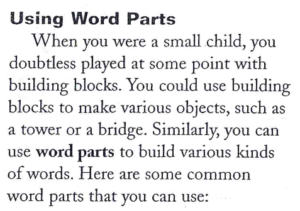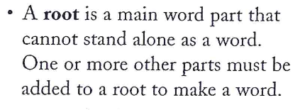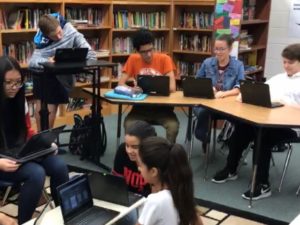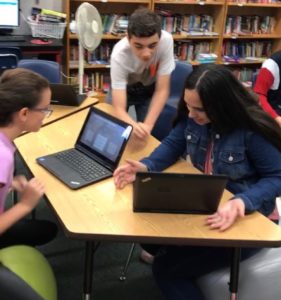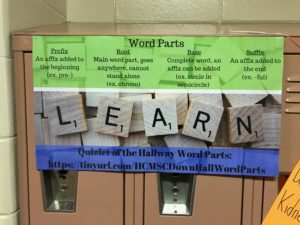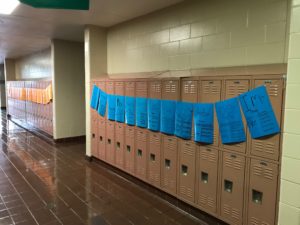One of the goals in my advanced reading classroom is to help my students become close readers of the world, including when it comes to vocabulary. Through my own time in the classroom and my early teaching years, I learned very quickly that teaching vocabulary out of context does not work. There is only memorization, no retention. Teaching vocabulary in context can work, but only if the word is revisited often which doesn’t always happen with new vocabulary words. It wasn’t until I decided to start teaching word parts that I felt that my vocabulary instruction was something that was long-lasting.
I begin each year with a word part unit. Students really buy in because we have a great conversation about the inconsistencies of vocabulary education in their (and my) past. I then show them what word parts are, the different types of affixes, and how they can give the reader a clue to the meaning of a word.
The first step is to build up knowledge of some regularly used word parts. I’ve been building up our word part list over years now. Since I have some of the same students every year, I don’t want to start over for them, so I just keep adding, and you would be surprised how quickly students grab onto these word parts. This year, we started with 77. In my classes that had students who already knew them, I paired them up with new students and gave them a section of the 77 to go over with the new student. In my new 6th grade class, I gave each group a section and they used their brains and resources (the internet) to learn. During this initial introduction, I do have them go over the definition, but more importantly, they were to find words that are in their vocabulary that would help them remember what the word part meant. Then I grouped together different groups that reviewed different sections and teach what they learned to each other.
I also use Quizlet as a way for students to learn the word parts. Quizlet is a great website for flashcards and also has this super fun collaborative game called Quizlet Live where students, in groups of 3-4, get definitions and have to match them to words and each member of the group has different words to choose from. Here is a link to my Quizlet profile if you want to check out our word parts!
This year, one of the initiatives at our school is academic vocabulary and interactive word walls, but as you see above, I do not have a lot of wall space in my room because of the book shelves, so with the help of an awesome science teacher in my hallway, we came up with the idea of making a word hallway instead of wall. Each student was given 2 word parts to make a mini-poster about with the type of word part, definition, and examples. During this activity, so that everyone was able to complete two, 19 new word parts were added. We then laminated the mini-posters and strung them into banners then hung them on the lockers that aren’t used in our hallway.
Now that they have a basic knowledge of types of word parts and different common word parts, we start breaking apart words using brace maps into word parts knowledge to define the words. I start with words that they already know, like subway and unbelievable, to show how word parts work. We then start breaking apart words they may not know, like intangible and junction, to show how it can help them when encountering unknown vocabulary.
Now, when the unit ends, our time with word parts don’t stop. First, we have word part flashcards at the door almost every day. I also revisit the unit throughout the year and point out whenever a word part comes across in our lessons. We’ll also do a mini-unit in January also where we’ll add more word parts.
This unit is one of the most mentioned units when I ask students the most useful things they learned in my class AND also their favorite unit. Here are some responses when I asked students how the word part lessons helped them:
- I can define most words without having to look in the dictionary! My vocab has expanded a lot!
- They help me because now that I’m in high school, I can understand new words faster.
- When there are words I do not know, I use my knowledge of word parts to break it apart and find the definition.
- The words parts help us by giving clues on what a word means in a book or article that we are reading.
- The word part lessons from Advanced Reading have helped me SO MUCH in my high school English. We constantly have new vocabulary and knowing affixes has really helped me figure out their definitions.
I say that that, along with the success I see in vocabulary acquisition after learning about word parts, shows the success of this take on vocabulary instruction.

